News All News
May 6th, 2019
April 2019 patents
Innovations in repellent surfaces, generation of beta cells, zero-index metamaterials, robotic graspers, CRISPR-based diagnostics, cortistatin analogues, RNA-guided human genome engineering, and more
Harvard faculty Don Ingber, George Church, Gu-Yeon Wei, David Brooks, William Shih, Wesley Wong, Doug Melton, Eric Mazur, Marko Loncar, Jon Einarsson, Conor Walsh, David Mooney, Dave Weitz, Bob Carter, Richard Mulligan, Quan Lu, George Whitesides, Nathanael Gray, Ramnik Xavier, Stuart Schreiber, Joanna Aizenberg, Stuart Orkin, Vijay Sankaran, Robert Westervelt, John Hutchinson, Omid Farokhzad, Uli von Andrian, Matt Shair, Brian Liau, and Gary King are among the inventors issued U.S. patents in April 2019.
The innovations recognized are as follows:
Modification of surfaces for fluid and solid repellency
U.S. Patent 10,245,355 (April 2, 2019)
Donald Ingber, Daniel C. Leslie, Michael Super, Alexander L. Watters, and Anna Waterhouse
Abstract: Articles, methods of making, and uses for modifying surfaces for liquid repellency are disclosed. The liquid repellant surfaces comprise a surface comprising an anchoring layer. The anchoring layer, which forms an immobilized molecular anchoring layer on the surface, has anchoring molecules, where each anchoring molecule has a head group that is covalently linked to the surface and a functional tail group. The anchoring molecules are crosslinked to each other to form a crosslinked network. The functional tail group has an affinity for a lubricating liquid, which is applied to the treated surface to form a lubricating layer. The anchoring layer and replenishable lubricating liquid are held together by non-covalent attractive forces. Together, these layers form an ultra-repellant slippery surface that repels certain immiscible liquids and prevents adsorption, coagulation, and surface fouling by components contained within.
High-throughput single cell barcoding
U.S. Patent 10,246,703 (April 2, 2019)
George M. Church and Francois Vigneault
Abstract: Methods and compositions for high-throughput, single cell analyzes are provided. The methods and compositions can be used for analysis of genomes and transcriptomes, as well as antibody discovery, HLA typing, haplotyping and drug discovery.
Capacitor reconfiguration of a single-input, multi-output, switched-capacitor converter
U.S. Patent 10,250,130 (April 2, 2019)
Gu-Yeon Wei, Tao Tong, David Brooks, and Saekyu Lee
Abstract: A switched capacitor converter and a method for configuring the switched capacitor converter are disclosed. The switched capacitor converter includes a capacitance resource with a cathode and an anode and a switching matrix with a first terminal, a second terminal, a third terminal, and at least one switch configured to switch among two or more connections selected from the group consisting of a connection of the first terminal to the anode and the second terminal to the cathode and a connection of the second terminal to the anode and the third terminal to the cathode.
Holder
U.S. Patent D844,805 (April 2, 2019)
Bhavik Nathwani, William M. Shih, Wesley Philip Wong, and Darren Yang
Claim: The ornamental design for a holder, as shown and described.
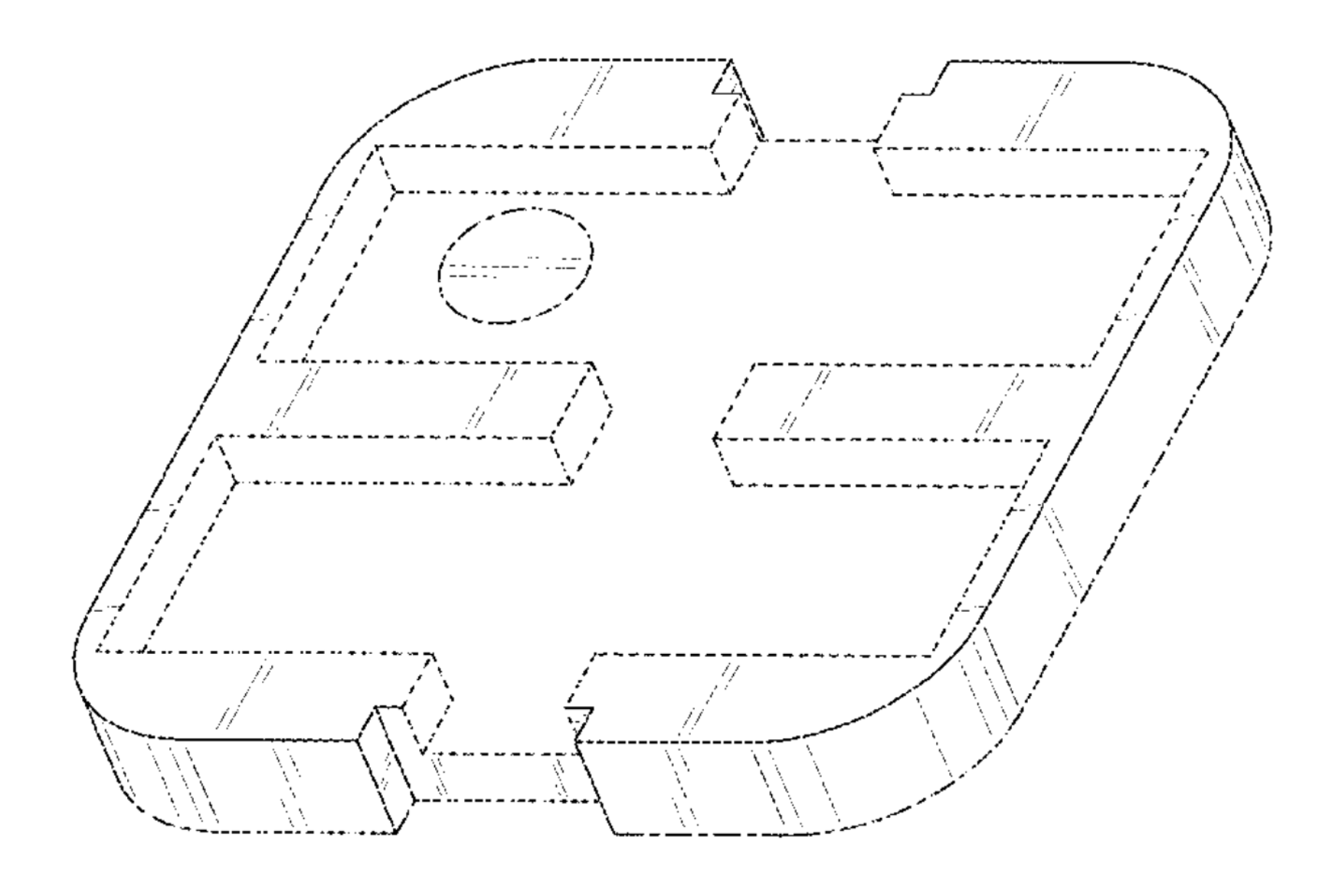
Methods for generating stem cell-derived beta cells and methods of use thereof
U.S. Patent 10,253,298 (April 9, 2019)
Douglas A. Melton and Mads Gurtler
Abstract: Disclosed herein are methods for generating SC-β cells, and isolated populations of SC-β cells for use in various applications, such as cell therapy.
Integrated impedance-matched photonic zero-index metamaterials
U.S. Patent 10,254,478 (April 9, 2019)
Eric Mazur, Yang Li, Orad Reshef, Marko Loncar, Shota Kita, Philip Alejandro Munoz, and Daryl Vulis
Abstract: In one aspect, a composition of matter is disclosed, which comprises a photonic crystal comprising a plurality of 2D or 3D periodically repeating structures, where the structures are configured and arranged relative to one another such that the photonic crystal exhibits a Dirac cone at the center of the Brillouin zone of its reciprocal lattice, e.g., at one frequency in the optical regime. In some embodiments, the structures are formed of a dielectric material. In another aspect, a photonic structure is disclosed, which comprises a substrate, a plurality of periodically repeating cavities formed in said substrate, where the cavities are sized and arranged relative to one another such that said photonic structure exhibits a substantially vanishing refractive index (preferably a zero refractive index) for at least one wavelength of electromagnetic radiation propagating through said photonic structure, for example, for at least one wavelength of the electromagnetic radiation in a range of about 400 nm to about 100 microns.
System and method for laparoscopic morcellator
U.S. Patent 10,258,364 (April 16, 2019)
Alexander Isakov, Kimberly Murdaugh, William Burke, Jon Einarsson, and Conor Walsh
Abstract: Embodiments of the invention provide a laparoscopic morcellating device and method for removing tissue from a body cavity. The morcellating device includes a containment mechanism having an aperture, a cutting mechanism designed to fit into an interior space of the containment mechanism and a retractor mechanism that is coupled to the cutting mechanism. The containment mechanism and cutting mechanism combination surrounds the tissue and the aperture of the containment mechanism is closed around the tissue. The morcellating device further includes a motor for actuating the retractor such that the cutting mechanism constricts and morcellates the tissue. The laparoscopic morcellating device further allows for torque balancing of the retractor mechanism, gas flow regulation of the body cavity, and safety feedback mechanisms that can alert the surgeon.
Systems and methods for inhibiting apneic events
U.S. Patent 10,258,531 (April 16, 2019)
David Paydarfar, Riccardo Barbieri, Premananda Pai Indic, Ruby Kandah, James Brian Niemi, John Paul Osborne, Hani M. Sallum, and Amanda V. Wozniak
Abstract: Systems and methods are disclosed to monitor physiological for the occurrence of life threatening events and to apply stimulation to prevent the occurrence of said life-threatening events. Systems and methods for applying the stimulation are also disclosed. These systems include applying the stimulation through via a mattress having a passive section and an active section, a plurality of focal stimulators, and/or an array to apply the stimulation are also disclosed. These devices include a mattress with an active region and a passive region, a stimulating array do deliver targeted stimulation, and a plurality of stimulators to apply focused stimulation.
Continuous cell programming devices
U.S. Patent 10,258,677 (April 16, 2019)
David J. Mooney, Omar Abdel-Rahman Ali, and Glenn Dranoff
Abstract: The present invention comprises compositions, methods, and devices for creating an infection-mimicking environment within a polymer scaffold to stimulate antigen-specific dendritic cell activation. Devices of the present invention are used to provide protective immunity to subjects against infection and cancer.
Formation and control of fluidic species
U.S. Patent 10,258,985 (April 16, 2019)
Darren Roy Link, David A. Weitz, Manuel Marquez-Sanchez, and Zhengdong Cheng
Abstract: This invention generally relates to systems and methods for the formation and/or control of fluidic species, and articles produced by such systems and methods. In some cases, the invention involves unique fluid channels, systems, controls, and/or restrictions, and combinations thereof. In certain embodiments, the invention allows fluidic streams (which can be continuous or discontinuous, i.e., droplets) to be formed and/or combined, at a variety of scales, including microfluidic scales. In one set of embodiments, a fluidic stream may be produced from a channel, where a cross-sectional dimension of the fluidic stream is smaller than that of the channel, for example, through the use of structural elements, other fluids, and/or applied external fields, etc. In some cases, a Taylor cone may be produced. In another set of embodiments, a fluidic stream may be manipulated in some fashion, for example, to create tubes (which may be hollow or solid), droplets, nested tubes or droplets, arrays of tubes or droplets, meshes of tubes, etc. In some cases, droplets produced using certain embodiments of the invention may be charged or substantially charged, which may allow their further manipulation, for instance, using applied external fields. Non-limiting examples of such manipulations include producing charged droplets, coalescing droplets (especially at the microscale), synchronizing droplet formation, aligning molecules within the droplet, etc. In some cases, the droplets and/or the fluidic streams may include colloids, cells, therapeutic agents, and the like.
Fluid injection using acoustic waves
U.S. Patent 10,258,987 (April 16, 2019)
David A. Weitz and Thomas Franke
Abstract: The present invention generally relates to the manipulation of fluids using acoustic waves such as surface acoustic waves. In some aspects, one fluid may be introduced into another fluid via application of suitable acoustic waves. For example, a fluid may be added or injected into another fluid by applying acoustic waves where, in the absence of the acoustic waves, the fluid cannot be added or injected, e.g., due to the interface or surface tension between the fluids. Thus, for example, a fluid may be injected into a droplet of another fluid. Other embodiments of the invention are generally directed to systems and methods for making or using such systems, kits involving such systems, or the like.
Compliant adaptive robot grasper
U.S. Patent 10,259,122 (April 16, 2019)
Lael Ulam Odhner, Leif Patrick Jentoft, and Yaroslav Tenzer
Abstract: A compliant adaptive robot grasper comprises a multi-bar finger linkage, including a fingertip link, at least one base link, and front and rear links joining the base link via a first set of joints with the fingertip links via a second set of joints. The base link includes a mounting structure, allowing it to be mounted on a mounting block for rotary actuation. Linear connections between the joints form a shape substantially in the form of a parallelogram allowing the linear connections across the front and rear links to remain substantially parallel to one another as the front and rear links pivot about the base link without substantially changing the orientation of the fingertip link until and unless the multi-bar finger linkage contacts an external object.
VEGF-binding protein for blockade of angiogenesis
U.S. Patent 10,259,862 (April 16, 2019)
Bob Carter, Jeng-Shin Lee, Szofia S. Bullain, and Richard C. Mulligan
Abstract: Provided are chimeric VEGF-binding proteins and nucleic acids (e.g., a vector) encoding chimeric VEGF-binding proteins, methods and host cells for producing these proteins and nucleic acids, and pharmaceutical compositions containing these proteins and nucleic acids. Also provided are methods of treating an angiogenic disease or disorder that include administering at least one of the chimeric VEGF-binding proteins or at least one of the nucleic acids (e.g., a vector) encoding a chimeric VEGF-binding protein.
Delivery of cargo proteins via ARRDC1-mediated microvesicles (ARMMs)
U.S. Patent 10,260,055 (April 16, 2019)
Quan Lu, Qiyu Wang, and Stanley N. Cohen
Abstract: Methods, systems, compositions and strategies for the delivery of WW domain-containing fusion proteins into cells in vivo, ex vivo, or in vitro via ARMMs are provided. Methods, systems, compositions and strategies for the delivery of cargo proteins, such as transcription factors, tumor suppressors, developmental regulators, growth factors, metastasis suppressors, pro-apoptotic proteins, nucleases, recombinases, and reprogramming factors into cells in vivo, ex vivo, or in vitro via fusion to ARMM associated proteins (e.g., ARRDC1 or TSG101) are also provided.
Pneumatic insect robots
U.S. Patent 10,260,533 (April 16, 2019)
Yanina Shevchenko, George M. Whitesides, Adam Stokes, Gabrielle Compton, and Alex Nemiroski
Abstract: A modular pneumatic robotic actuator, including a first elongated hollow structure and a second elongated hollow structure connected to each other at a moveable joint; an inflatable bladder comprised of an elastomeric material disposed at the said joint and immobilized between the first and second hollow structures, wherein the said inflatable bladder inflates preferentially away from the joint; and a restraining membrane comprised of an elastomeric material disposed over the bladder and connecting the first and second hollow structures, wherein the said restraining membrane is relaxed when the bladder is deflated.
Holder
U.S. Patent D846,755 (April 23, 2019)
Bhavik Nathwani, William M. Shih, Wesley Philip Wong, and Darren Yang
Claim: The ornamental design for a holder, as shown and described.
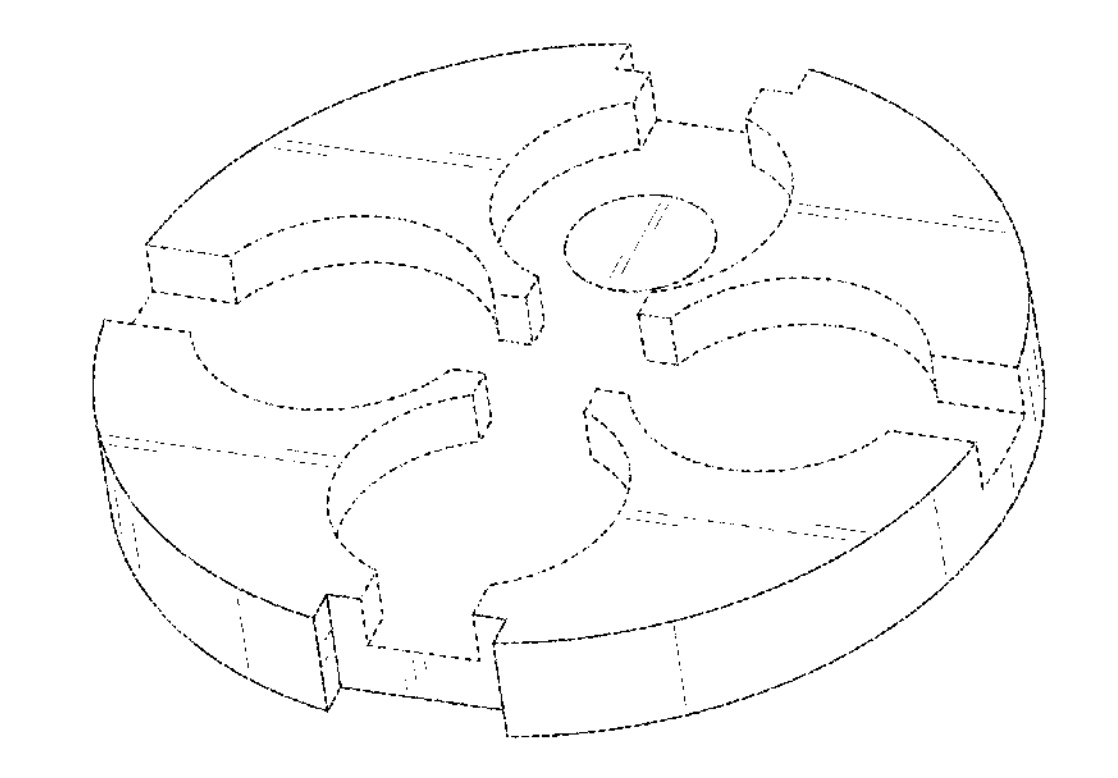
Uses of salt-inducible kinase (SIK) inhibitors
U.S. Patent 10,265,321 (April 23, 2019)
Alykhan Shamji, Thomas Sundberg, Nathanael S. Gray, Ramnik Xavier, Stuart L. Schreiber, Hwan Geun Choi, and Yanke Liang
Abstract: The present disclosure provides methods of treating and/or preventing inflammatory bowel disease (IBD) and graft-versus-host disease (GVHD) using salt-inducible kinase (SIK) inhibitors, such as macrocyclic SIK inhibitors of Formula (I), imidazolyl SIK inhibitors of Formula (II), and urea and carbamate SIK inhibitors of Formula (III-A) (e.g., urea and carbamate SIK inhibitors of Formula (III)).
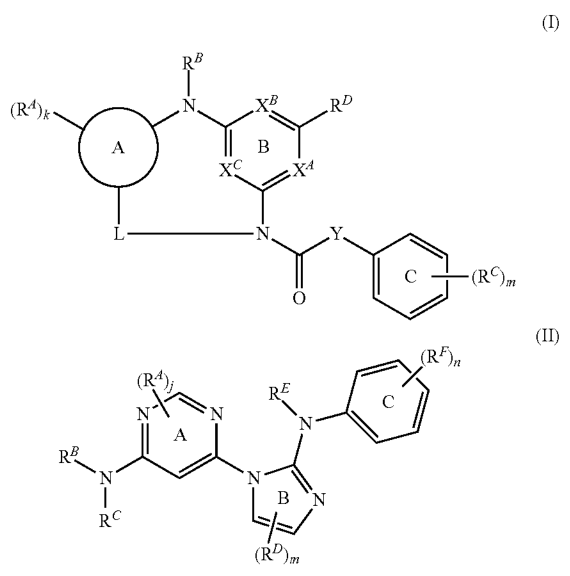
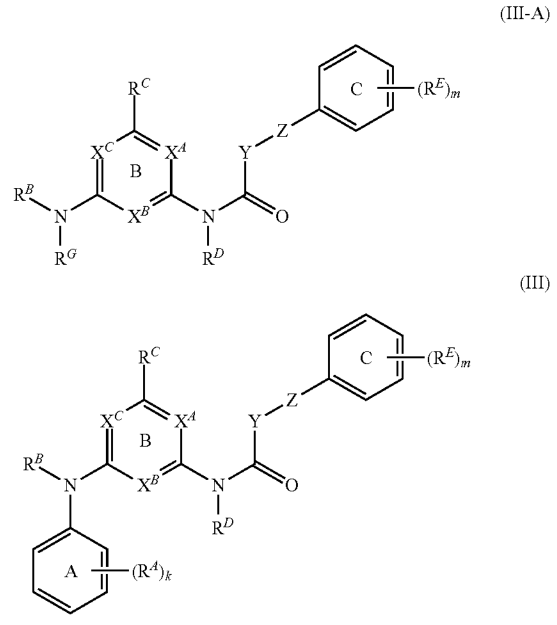
High-surface area functional material coated structures
U.S. Patent 10,265,694 (April 23, 2019)
Joanna Aizenberg, Tanya Shirman, Nicolas Vogel, Mathias Kolle, and Michael Aizenberg
Abstract: Methods for forming an interconnected network of solid material and pores, with metal residing only at the air/solid interface of the interconnected network structure are described. In certain embodiments, nanoparticle decorated sacrificial particles can be used as sacrificial templates for the formation of a porous structure having an interconnected network of solid material and interconnected network of pores. The nanoparticles reside predominantly at the air/solid interface and allow further growth and accessibility of the nanoparticles at defined positions of the interconnected structure. SEM and TEM measurements reveal the formation of 3D interconnected porous structures with nanoparticles residing predominantly at the air/solid interface of the interconnected structure.
Apparatus for measurement of spinning forces relating to molecules
U.S. Patent 10,265,705 (April 23, 2019)
Wesley Philip Wong and Kenneth Anders Halvorsen
Abstract: An apparatus for measuring a characteristic of a sample includes a sample measurement apparatus (1404), which includes a light source (1406) configured to illuminate the sample; and a detector (1412) configured to receive light from the sample. The sample measurement apparatus is sized and dimensioned to fit within a centrifuge receptacle, the centrifuge receptacle (1416) coupled to a spindle configured to rotate the centrifuge receptacle to apply a force to the sample.
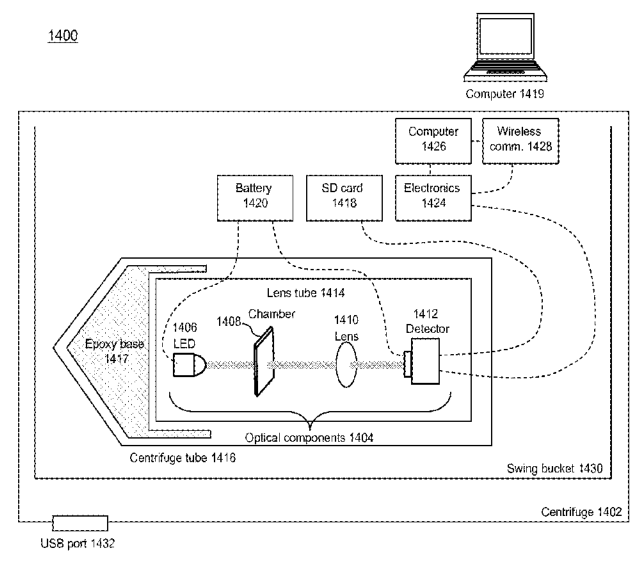
Modulation of BCL11A for treatment of hemoglobinopathies
U.S. Patent 10,266,826 (April 23, 2019)
Stuart H. Orkin and Vijay G. Sankaran
Abstract: The invention relates to methods and uses of modulating fetal hemoglobin expression (HbF) in a hematopoietic progenitor cells via inhibitors of BCL11A expression or activity, such as RNAi and antibodies.
CRISPR effector system based diagnostics
U.S. Patents 10,266,886 and 10,266,887 (April 23, 2019)
Omar Abudayyeh, James Joseph Collins, Jonathan Gootenberg, Feng Zhang, and Eric S. Lander
Abstract: The embodiments disclosed herein utilized RNA targeting effectors to provide a robust CRISPR-based diagnostic with attomolar sensitivity. Embodiments disclosed herein can detect broth DNA and RNA with comparable levels of sensitivity and can differentiate targets from non-targets based on single base pair differences. Moreover, the embodiments disclosed herein can be prepared in freeze-dried format for convenient distribution and point-of-care (POC) applications. Such embodiments are useful in multiple scenarios in human health including, for example, viral detection, bacterial strain typing, sensitive genotyping, and detection of disease-associated cell free DNA.
Method and apparatus for volumetric imaging of a three-dimensional nucleic acid containing matrix
U.S. Patent 10,266,888 (April 23, 2019)
Evan R. Daugharthy, Richard C. Terry, Je-Hyuk Lee, George M. Church, and Benjamin W. Pruitt
Abstract: Methods of volumetric imaging of a three-dimensional matrix of nucleic acids within a cell is provided. An automated apparatus for sequencing and volumetric imaging of a three-dimensional matrix of nucleic acids is provided.
Nano-otologic protective equipment for impact noise toxicity and/or blast overpressure exposure
U.S. Patent 10,271,993 (April 30, 2019)
Rick Rogers, Brendan Clifford, Robert M. Westervelt, John W. Hutchinson, and Howard A. Stone
Abstract: An apparatus preventing hearing loss having a body made of soft compliant material having first and second ends and a channel extending therethrough, an acoustically limp material adjacent one end of the body with the acoustically limp material having a hole therein aligned with the channel extending through the body, component film, or other structure covering or sealing the opening in the acoustically limp material. The film may be a high-strength polymer less than 10 micrometers thick. A plurality of channels may extend through the body and a plurality of corresponding holes may be provided in the acoustically limp material. The film covers or seals the holes in the acoustically limp material. The film may behave like a flap to close in response to high energy sound waves. The flap shuts from the high intensity shock wave. The body may have shape to fit in an ear canal.
Nanoparticles and methods of use
U.S. Patent 10,272,050 (April 30, 2019)
Omid C. Farokhzad, Won Il Choi, Ulrich von Andrian, and Nazila Kamaly
Abstract: This disclosure relates to nanoparticles, compositions, methods of making, and methods of use thereof.
Cortistatin analogues, syntheses, and uses thereof
U.S. Patent 10,273,240 (April 30, 2019)
Matthew D. Shair and Henry Efrem Pelish
Abstract: New cortistatin compounds and pharmaceutically acceptable salts and pharmaceutically acceptable compositions thereof are provided. These compounds can be used to treat a disorder mediated by CDK8 and/or CDK19 kinase or by the Mediator Complex generally. In particular, the compounds can be used, for example, to treat a disorder such as a tumor, cancer, or a disorder associated with angiogenesis.
Cortistatin analogues and syntheses and uses thereof
U.S. Patent 10,273,241 (April 30, 2019)
Matthew D. Shair, Juergen Ramharter, Henry Efrem Pelish, Brian Bor-Jen Liau, and Jae Young Ahn
Abstract: Provided herein are compounds of Formula (A), (B), (C), (D) and (E), pharmaceutically acceptable salts, quaternary amine salts, and N-oxides thereof, and pharmaceutical compositions thereof.
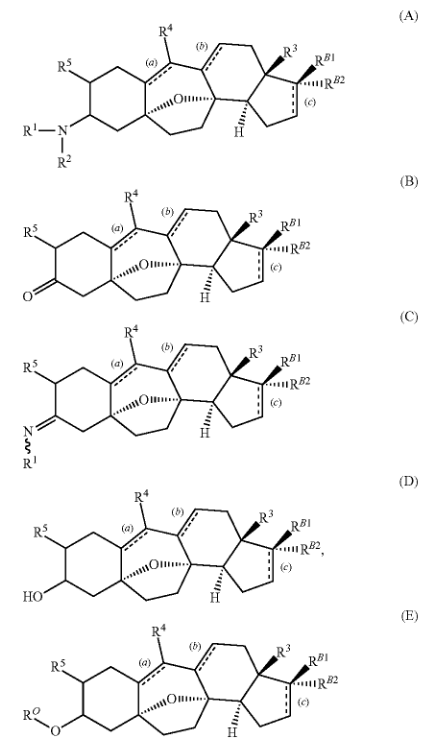
Compounds of Formula (A), (B), (C), (D), and (E) are contemplated useful as therapeutics for treating a wide variety of conditions, e.g., including but not limited to, conditions associated with angiogenesis and with CDK8 and/or CDK19 kinase activity. Further provided are methods of inhibiting CDK8 and/or CDK19 kinase activity, methods of modulating the β-catenin pathway, methods of modulating STAT1 activity, methods of modulating the TGFβ/BMP pathway, methods of modulating HIF-1-alpha activity in a cell, and methods of increasing BIM expression to induce apoptosis, using a compound of Formula (A), (B), (C), (D), or (E). Further provided are CDK8 and CDK19 point mutants and methods of use thereof.
Cortistatin analogues and syntheses and uses thereof
U.S. Patent 10,273,264 (April 30, 2019)
Matthew D. Shair and Henry Efrem Pelish
Abstract: Compounds of Formula (A'), (B'), (C'), (D'), (E'), (A''), (B''), (C''), (D''), (E''), (G1), and (G2) are useful as therapeutics for treating a wide variety of conditions in a host such as a human, e.g., including but not limited to, conditions associated with angiogenesis and/or which are mediated by CDK8 and/or CDK19 kinase activity. Also provided are methods of modulating the β-catenin pathway, methods of modulating STAT1 activity, methods of modulating the TGFβ/BMP pathway, methods of modulating HIF-1-alpha activity in a cell, and methods of increasing BIM expression to induce apoptosis, using an effective amount of a compound of Formula (A'), (B'), (C'), (D'), (E'), (A''), (B''), (C''), (D''), (E''), (G1), or (G2).
RNA-guided human genome engineering
U.S. Patent 10,273,501 (April 30, 2019)
George M. Church, Prashant G. Mali, and Luhan Yang
Abstract: A method of altering a eukaryotic cell is provided including transfecting the eukaryotic cell with a nucleic acid encoding RNA complementary to genomic DNA of the eukaryotic cell, transfecting the eukaryotic cell with a nucleic acid encoding an enzyme that interacts with the RNA and cleaves the genomic DNA in a site specific manner, wherein the cell expresses the RNA and the enzyme, the RNA binds to complementary genomic DNA and the enzyme cleaves the genomic DNA in a site specific manner.
Systems and methods for keyword determination and document classification from unstructured text
U.S. Patent 10,275,516 (April 30, 2019)
Gary King, Margaret Roberts, and Patrick Lam
Abstract: In various embodiments, documents are searched and retrieved via receipt of a search query, electronically identifying a reference set of relevant documents, providing a search set of documents, creating a database comprising at least some of the documents of the search set and the reference set, computationally classifying the documents in the database, extracting keywords from the search set and one or more classified sets, optionally filtering the extracted keywords, and electronically identifying at least some of the documents from the database that contain one or more of the extracted keywords.
Tags: issued patents
Press Contact: Kirsten Mabry | (617) 495-4157
